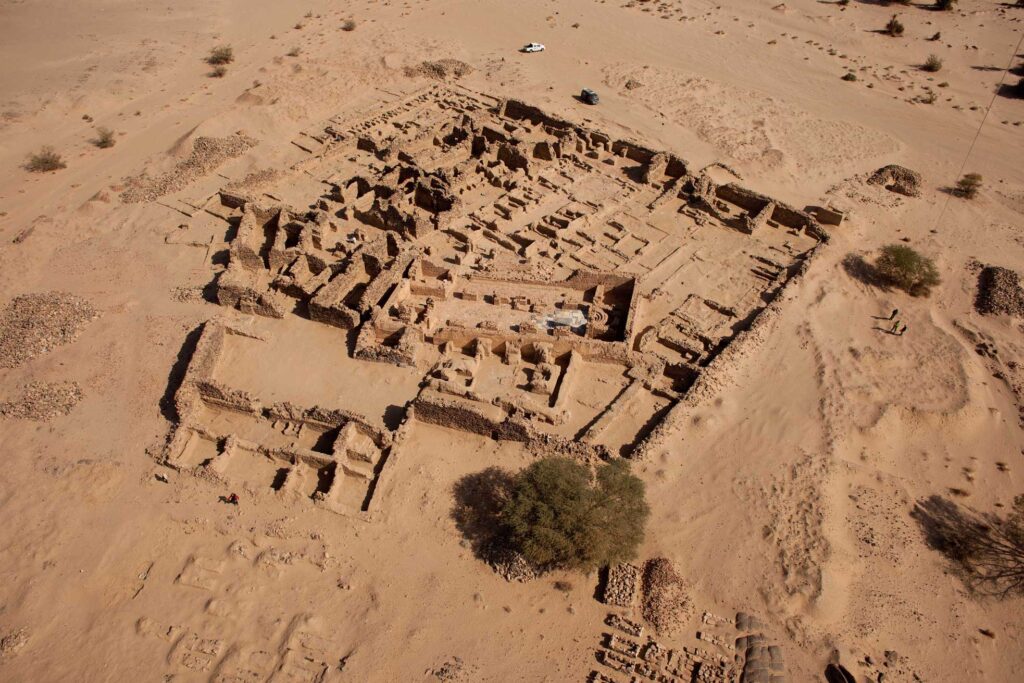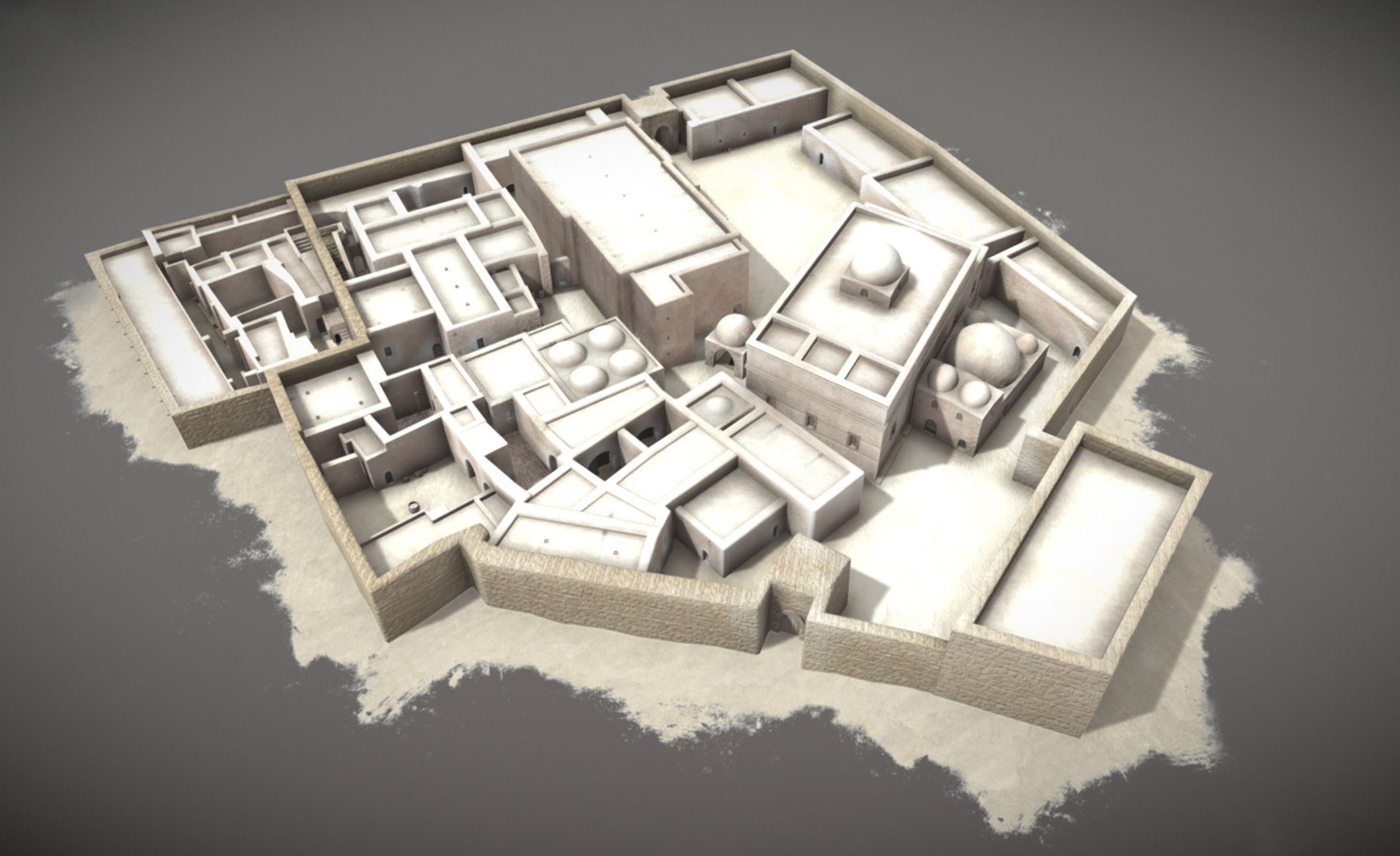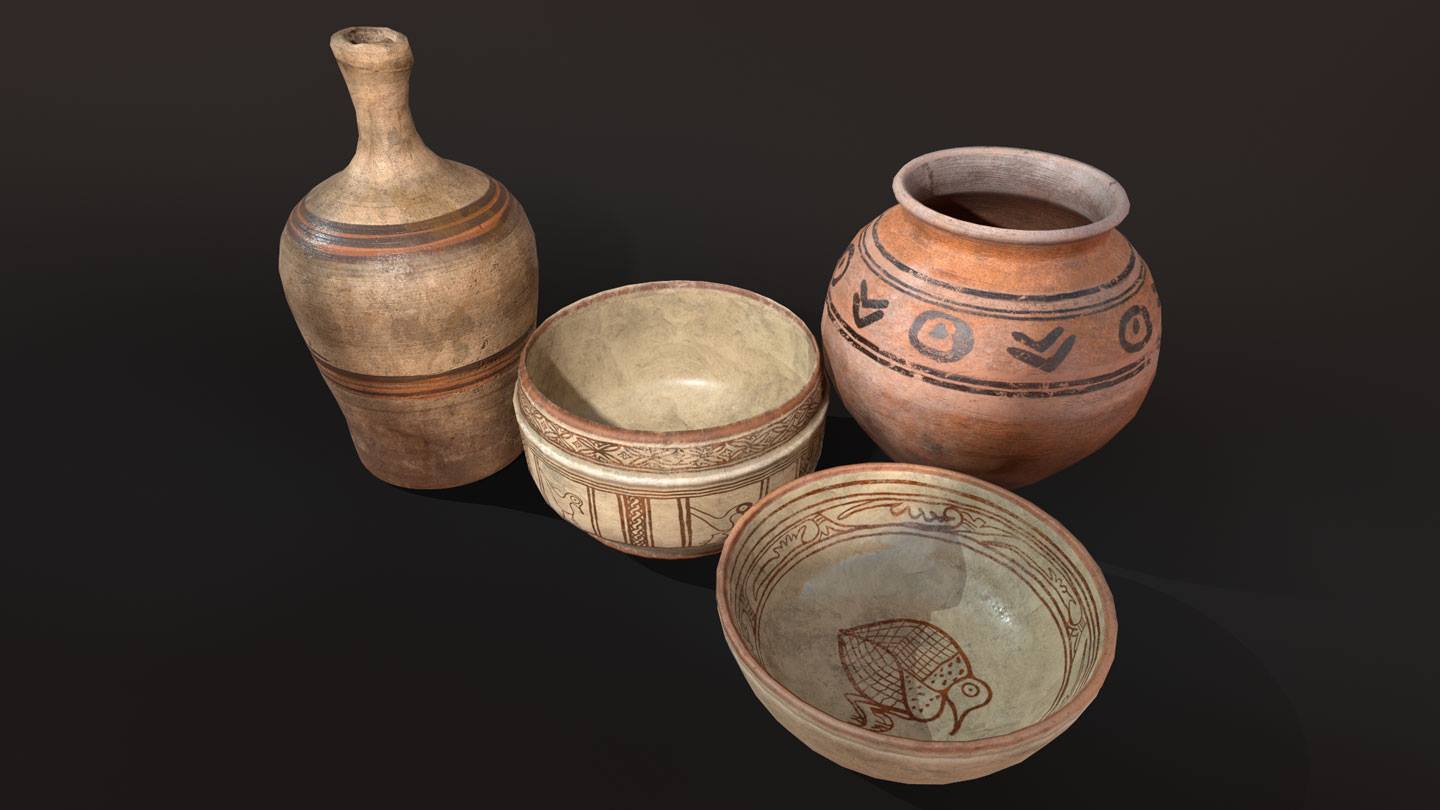
Monastic Spirit
After the fall of the Meroitic Empire around 350 CE, three kingdoms emerged in Nubia. From the Egyptian border south, they were Nobadia, Makuria (where Ghazali is located), and Alodia. Monasticism appeared soon after Nubia converted to Christianity about 540-570. Nubian monks modelled their lives after Egyptian ones, and also drew inspiration from Palestine and Byzantium. This monastery was probably built between 680 and 720 by the fabled king Merkurios, who united Makuria with Nobadia. It was cenobitic, meaning that the monks prayed, lived, ate, and worked together. Clearly distinct areas served different purposes: churches for worship, dormitories for sleeping, refectories for eating, and a separate area for food production, with a mill and an oil press.
The daily activities of the monks included prayers, worship, and spiritual attainment, but also manual labour like iron production in a workshop outside the monastery. Remnants of medicinal plants found in excavations indicate that the monks were also healers. Portulaca oleracea, Euphorbia aegyptiaca and Cleome gynandra are known for their various curative properties. Initially, probably no more than 36 monks lived in the monastery. In its heyday during the mid-10th – mid-12th centuries they numbered 72 or more, judging from the number of seats in the enlarged dining room, the number of toilets in a new extension, and a possible upper storey of the living quarters.
The site was explored by the mission of PCMA UW from 2012 to 2018.


